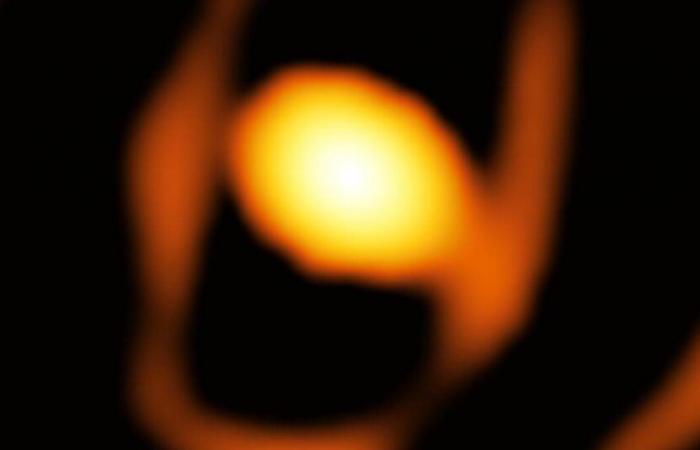The first close-up photo of a massive star located outside our galaxy, more than 160,000 light years away, was taken from Chile. The star is surrounded by a gigantic cocoon of dust, revealing that it is in the final stages before becoming a supernova.
The star that astronomers from the European Organization for Astronomical Research in the Southern Hemisphere (ESO) managed to photograph is a red supergiant almost 2000 times larger than our Sun.
WOH G64 – nicknamed the “giant star” – is located in the Large Magellanic Cloud, one of the small galaxies that orbit the Milky Way.
The star blows gas and dust around itself: “We discovered an ovoid cocoon closely surrounding the star,” explains Keiichi Ohnaka, lead author of a study, in a press release. study reporting the observations published in Astronomy & Astrophysics. “We are excited because this could be linked to the drastic ejection of material from the dying star before a supernova explosion.”
The team of scientists has been interested in this gigantic star for a long time. During the early 2000s, WOH G64 had been observed with the interferometer (VLTI) du Very Large Telescope (VLT) found in the Atacama Desert in northern Chile; this allowed us to know more about its characteristicsbut its direct image remained very difficult to obtain, because it is located beyond our galaxy.
It is thanks to the development of GRAVITYone of the second generation instruments of the VLTI that the team of astronomers finally obtained the desired image, of “impressive sharpness”, specifies the ESO.
Witness the life of a star “in real time”
After comparing their new results with other previous observations of WOH G64, scientists were surprised to find that the star had darkened over the past decade: “It has undergone a significant change over the past ten years, giving us a rare opportunity to witness the life of a star in real time,” notes Gerd Weigelt, professor of astronomy at the Max Planck Institute for Radio Astronomy from Bonn, and co-author of the study.
During their final phase of life, red supergiants like WOH G64 shed their outer layers of gas and dust, a process that can last thousands of years.
>> Read also: The star Betelgeuse has already exploded in a supernova according to a study
According to the team, this ejected material could also be responsible for the weakening of the star as well as the unexpected shape of the dust cocoon surrounding it: it is stretched, which surprised the scientists, who expected to a different shape based on previous observations and computer models.
This ovoid shape could be explained either by the ejection of material by the star, or by the influence of a still undiscovered companion star.
External content
This external content cannot be displayed because it may collect personal data. To view this content you must authorize the category Social networks.
Accept More info






